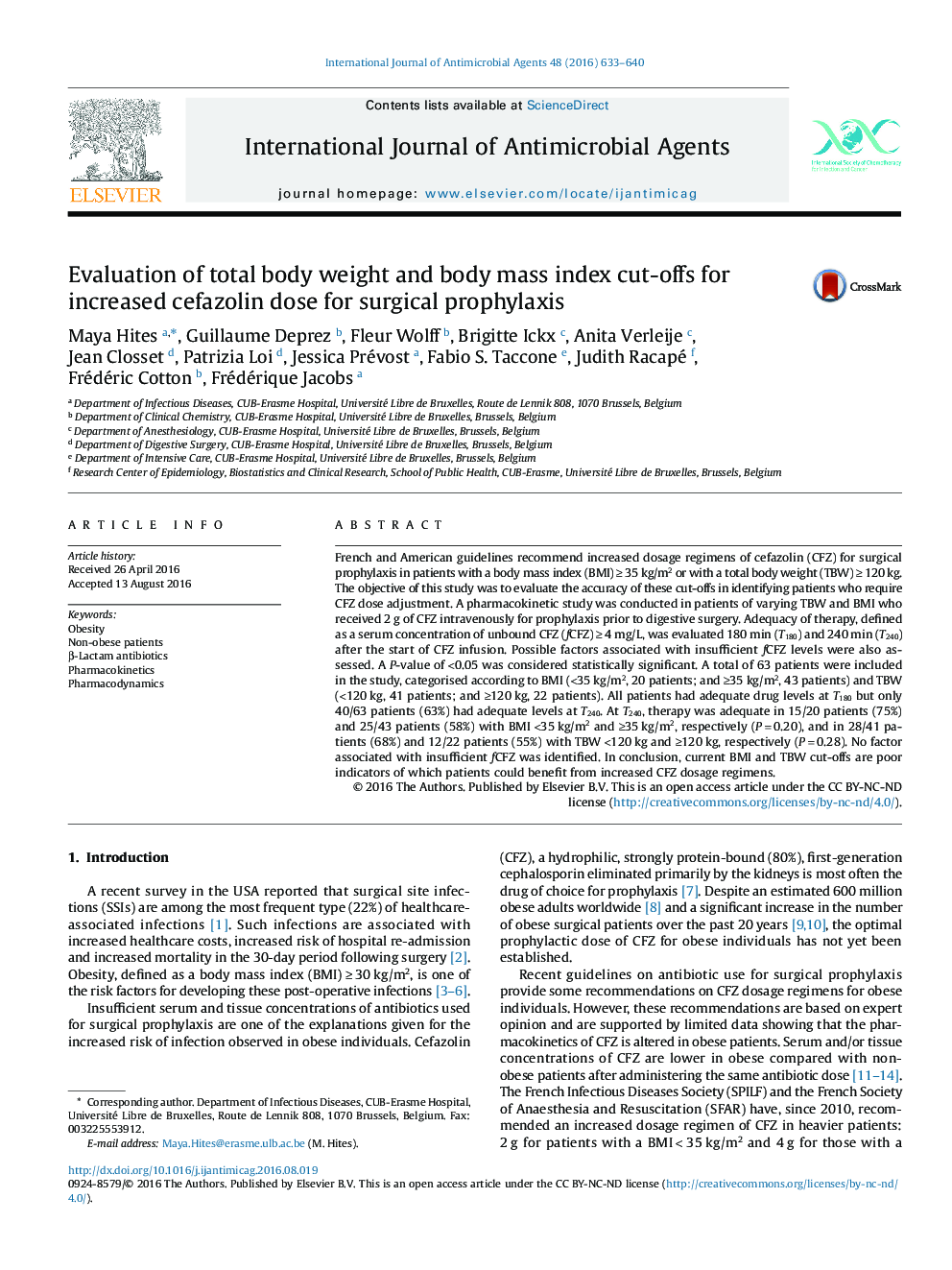| Article ID | Journal | Published Year | Pages | File Type |
|---|---|---|---|---|
| 5666854 | International Journal of Antimicrobial Agents | 2016 | 8 Pages |
â¢2âg of cefazolin (CFZ) provides inadequate prophylaxis in some obese and non-obese patients.â¢A 120âkg total body weight cut-off does not accurately identify patients needing a CFZ dose increase.â¢A 35âkg/m2 body mass index cut-off does not accurately identify patients needing a CFZ dose increase.
French and American guidelines recommend increased dosage regimens of cefazolin (CFZ) for surgical prophylaxis in patients with a body mass index (BMI)ââ¥â35âkg/m2 or with a total body weight (TBW)ââ¥â120âkg. The objective of this study was to evaluate the accuracy of these cut-offs in identifying patients who require CFZ dose adjustment. A pharmacokinetic study was conducted in patients of varying TBW and BMI who received 2âg of CFZ intravenously for prophylaxis prior to digestive surgery. Adequacy of therapy, defined as a serum concentration of unbound CFZ (fCFZ)ââ¥â4âmg/L, was evaluated 180âmin (T180) and 240âmin (T240) after the start of CFZ infusion. Possible factors associated with insufficient fCFZ levels were also assessed. A P-value of <0.05 was considered statistically significant. A total of 63 patients were included in the study, categorised according to BMI (<35âkg/m2, 20 patients; and â¥35âkg/m2, 43 patients) and TBW (<120âkg, 41 patients; and â¥120âkg, 22 patients). All patients had adequate drug levels at T180 but only 40/63 patients (63%) had adequate levels at T240. At T240, therapy was adequate in 15/20 patients (75%) and 25/43 patients (58%) with BMI <35âkg/m2 and â¥35âkg/m2, respectively (Pâ=â0.20), and in 28/41 patients (68%) and 12/22 patients (55%) with TBW <120âkg and â¥120âkg, respectively (Pâ=â0.28). No factor associated with insufficient fCFZ was identified. In conclusion, current BMI and TBW cut-offs are poor indicators of which patients could benefit from increased CFZ dosage regimens.
